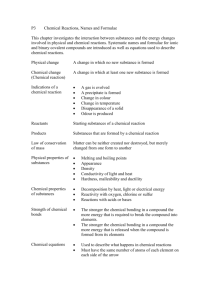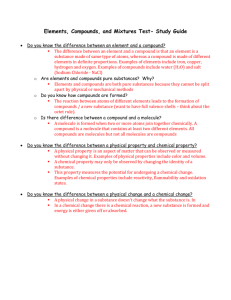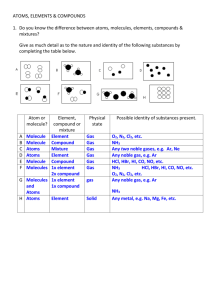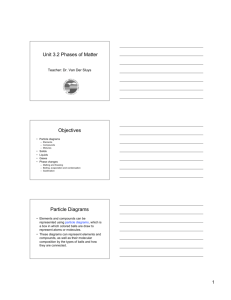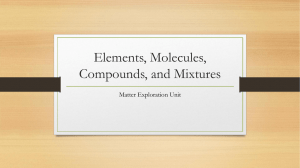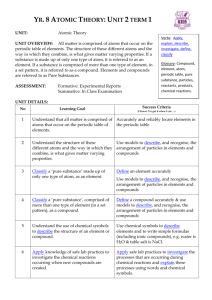Elements
advertisement
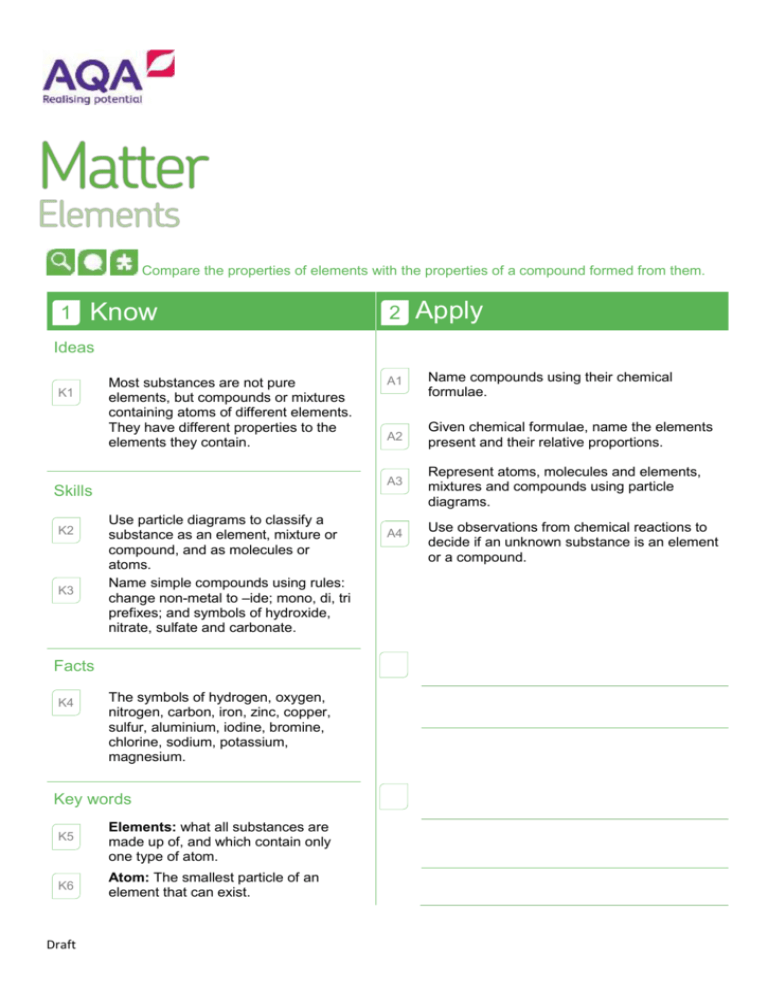
Compare the properties of elements with the properties of a compound formed from them. 1 Know 2 Apply Ideas K1 Most substances are not pure elements, but compounds or mixtures containing atoms of different elements. They have different properties to the elements they contain. Skills K2 K3 Use particle diagrams to classify a substance as an element, mixture or compound, and as molecules or atoms. Name simple compounds using rules: change non-metal to –ide; mono, di, tri prefixes; and symbols of hydroxide, nitrate, sulfate and carbonate. Facts K4 The symbols of hydrogen, oxygen, nitrogen, carbon, iron, zinc, copper, sulfur, aluminium, iodine, bromine, chlorine, sodium, potassium, magnesium. Key words K5 Elements: what all substances are made up of, and which contain only one type of atom. K6 Atom: The smallest particle of an element that can exist. Draft A1 Name compounds using their chemical formulae. A2 Given chemical formulae, name the elements present and their relative proportions. A3 Represent atoms, molecules and elements, mixtures and compounds using particle diagrams. A4 Use observations from chemical reactions to decide if an unknown substance is an element or a compound. K7 K8 K9 K10 3 E1 E2 E3 Draft Molecules: Two to thousands of atoms joined together. Most nonmetals exist either as small or giant molecules. Compound: Pure substances made up of two or more elements strongly joined together. Chemical formula: Shows the elements present in a compound and their relative proportions. Polymer: A molecule made of thousands of smaller molecules in a repeating pattern. Plastics are man-made polymers, starch is a natural polymer. Extend Use particle diagrams to predict physical properties of elements and compounds. Deduce a pattern in the formula of similar compounds and use it to suggest formulae for unfamiliar ones. Compare and contrast the properties of elements and compounds and give a reason for differences.



